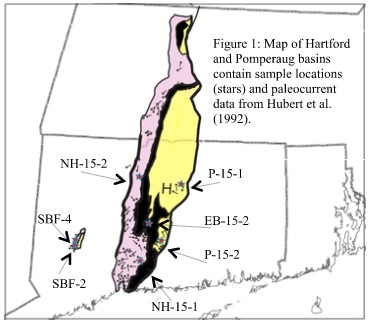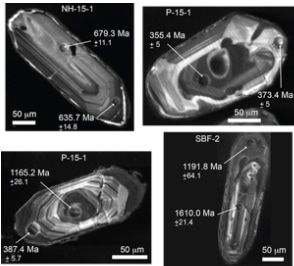Faculty Sponsor: Michael Wizevich
GSC Newsletter Article Project Summary
Zircons were then handpicked from the non-magnetic portion of the sample. Approximately 100 zircon grains were picked per sample and sent to the LaserChron Center (University of Arizona) for U-Pb age-dating on a LA-ICPMS. Several samples were “double dated,” where age-dates were taken on the core and rims of the same zircon. SEM cathodoluminescence (CL) was utilized to distinguish rims and cores of the zircon (Figure 2).
| In addition to the overwhelmingly complex geology surrounding the Mesozoic basins, multiple source areas, metamorphic alterations and recycling of zircons make pinpointing provenance a challenge. Overall, the samples contain diverse populations of zircons, primarily reflecting source areas affected by one or more orogeny: Alleghanian (270-320 Ma), Acadian (340-400 Ma), Taconic (420-490 Ma), Peri-Gondwanan (550-640 Ma), and Grenville (980-1320 Ma). Examinations of the results of this study show several notable features:
| Figure 2: Detailed CL images of detrital zircons showing laser ablation pits, oscillatory zoning and metamorphic overgrowths of various ages. |
|



